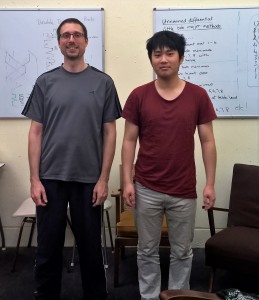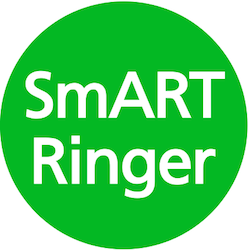Just over 12 months ago three of us from Wellington Cathedral attended Module 1 and 2 courses given just before the Wellington Ringing Festival. We all enjoyed the courses which included some lively discussion as there were several experienced teachers attending.
In March this year we recruited six potential ringers from the local university, all of whom were considerably younger than other ringers that we have taught recently. What did we apply from the ART courses in our teaching?
I am considering things that we have not done previously.
Firstly, moving ‘ringed’ fingers up and down a vertical rope to get the feel of the ringing movement, noting the need to bend the elbows between having straight arms top and bottom. It worked!
Secondly, starting by ringing a bell up. I don’t recall any of us going the whole hog and having a learner ring all the way up. About half way seemed to work: it gave the learner the feel of the bell and rope moving without losing control. When letting the learner ring at backstroke then hand stroke separately, the learners had a better feel for what was happening. One thing I did NOT do was show the learners how to recover a rope if they let it go. I always emphasise to learners that the only time they let go of a rope is if a stay breaks.
To show what happens if they do let go, I ring a bell about a third of the way up, clear everyone out of the way and let the rope go. As it flails around the learners get a clear idea of why they should never let go! The third thing we did was to guide the learners’ hands rather than their rope when helping them. It worked!
Our learners were told that it might take six months for them to learn to handle a bell and ring rounds. They were ringing rounds in one month. Can we credit this wholly to ART? probably not.
Intelligent young people learn quickly and they were being taught by experienced teachers. But I do believe the ART based things I have mentioned aided the rapid progress to this stage.
What of the teaching theory that we were taught? Here I am less certain we gained any advantage.
Two of us were already trained educators so the theory was not exactly new. I am certain that I did not at any point consciously analyse what I was doing in the light of theory. Certainly one recognises different personalities and acts accordingly. Ringer A responds to encouragement and is a bit competitive. He likes to know he is up with the leaders. Ringer B is diffident and shy. He too needs encouragement. For these two any correction has to be gentle. Ringer C wants to know exactly what he is supposed to be doing down to the last detail. A little older than the rest, he can be corrected firmly if necessary. Without going through all the learners, to me this is simply having empathy with the people one is teaching.
Then we moved beyond rounds and call changes, and used some of the exercises that had been suggested on the ART courses. Useful!
As we had acquired a screen and projector to use for the ART courses and we used Abel already, our next thought was to use the moving ringers in Abel projected onto the screen as a teaching aid. With the learner standing watching the screen (not ringing a bell), they were asked to say out loud which bell the tenor was following in a course and then a touch of plain bob doubles. This allowed them to develop ropesight and understand the idea of following the last bell without the added burden of handling a bell. When they could follow Abel successfully, the learners then moved onto real bells.
They found it easier to find the last bell on the actual bells than on Abel. We used the same process to introduce plain hunting on the treble. We think this process aided learning and will use it again.
Will we teach the same way again? Yes and no! Yes, we will use the same way of teaching bell handling on tower bells. Meanwhile we have acquired a mini ring. I suspect we will first teach bell handling and change ringing on the mini ring and progress to tower bells from there. So, no we won’t be teaching in exactly the same way. None the less what we learnt from the ART course will be useful. Even for experienced teachers we think the ART course is useful.

Edwin Hermann & David Sik, two of the Wellington learners, who have just completed LtR Level 5 just 10 and a half months after starting to learn bell ringing
Derek Williams – Wellington Cathedral

